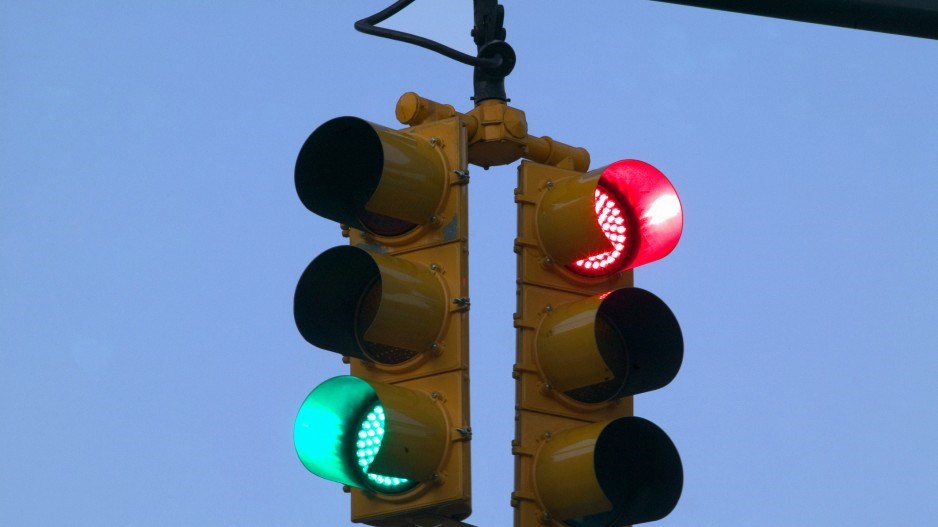British Columbia is exposed to more than its fair share of horror stories related to driving.
In 2023, we saw street racers in expensive automobiles, traffic jams caused by crashes and happening in Vancouver within a 48-hour span in July.
Some elected officials have chosen to deal with these issues through policy. In 2019, the provincial government reimplemented the intersection safety camera program and the City of Vancouver authorized a pilot project to reduce speeds in specific neighbourhoods and streets.
Research Co. and Glacier Media recently asked British Columbians about these measures and found a high level of support for some of them. Across the province, more than seven in 10 residents (72 per cent, unchanged since ) are in favour of using speed-on-green intersection cameras, or red light cameras that also capture vehicles that are speeding. Right now, 140 devices like these ones are operational in 26 communities.
Speed-on-green cameras are not regarded as negatively as the so-called “photo radar” of the 1990s that became a wedge issue in the 2001 provincial election. Sizable proportions of British Columbians who voted in 2020 for the BC Liberals (76 per cent), the BC New Democratic Party (NDP) (74 per cent) and the BC Green Party (73 per cent) approve of their use in British Columbia’s intersections.
Majorities of British Columbians are also supportive of three other types of automated speed enforcement: Fixed speed cameras, which stay in one location and measure speed as a vehicle passes (73 per cent, down three points), mobile speed cameras, which can be moved from place to place (65 per cent, down one point) and point-to-point enforcement, which uses cameras at two or more distant points on a road to issue tickets to vehicles whose average speed over the distance was excessive (57 per cent, down four points).
For the past four years, Vancouver has had a pilot project after city council unanimously passed a motion – introduced by Coun. Pete Fry – to reduce the speed limit to 30 km/h on select residential streets in the city. Grandview-Woodland was the first neighbourhood to live under the new rules, which also called for keeping the speed limits at school and playground zones at 30 km/h regardless of the day and time.
Almost seven in 10 British Columbians (70 per cent, down two points ) think reducing the speed limit to 30 km/h on select residential streets is a “good idea,” while only 22 per cent (up four points) consider it “bad.” There is a bit of pushback from residents compared to last year, but British Columbians side with the concept by a three-to-one margin.
One interesting tidbit on this question is the fact that British Columbians aged 18 to 34 are more likely to endorse a reduction of the speed limit on residential streets (73 per cent) than their counterparts aged 35 to 54 (68 per cent) and aged 55 and over (65 per cent).
The numbers shift when British Columbians are asked if they would personally like to see the speed limit reduced to 30 km/h on all residential streets in their own municipality, while keeping the speed limit on arterial and collector roads at 50 km/h. Just over three in five residents (61 per cent, down five points) like this idea, while 32 per cent (up four points) do not.
On this question, gender tells a compelling the story. The proportion of women in British Columbia who would welcome a Vancouver-style program in their municipality reaches 64 per cent. Among men, support stands at 56 per cent. Majorities of residents who voted in 2020 for the BC Greens (70 per cent), the BC NDP (65 per cent) and the BC Liberals (61 per cent) would like to see this policy in their own municipality.
While both approval for Vancouver’s guidelines and support for the adoption of a similar system have dropped slightly since 2022, one indicator has grown. This year, more than two in five British Columbians (43 per cent, up four points) say they see a car that they perceive is circulating above the speed limit of 50 km/h “at least once a day” on the street where they reside. Only 14 per cent of British Columbians (down one point) say this never happens.
Residents of the Fraser Valley (47 per cent), Metro Vancouver (45 per cent) and Vancouver Island (42 per cent) are more likely to report daily exposure to speeding vehicles near their domicile than their counterparts in Northern B.C. (36 per cent) or Southern B.C. (35 per cent).
Our survey shows that the policies to deal with speeding vehicles, whether as a punishment for not following the rules or as a change in local regulations, are not as contentious as social media might lead us to believe. Majorities of British Columbians continue to think these are good ideas, even if one-third are having a hard time imagining their implementation near their homes.
Mario Canseco is president of Research Co.
Results are based on an online study conducted from Nov. 9-11, 2023, among 800 adults in British Columbia. The data has been statistically weighted according to Canadian census figures for age, gender and region in British Columbia. The margin of error – which measures sample variability – is plus or minus 3.5 percentage points, 19 times out of 20.






